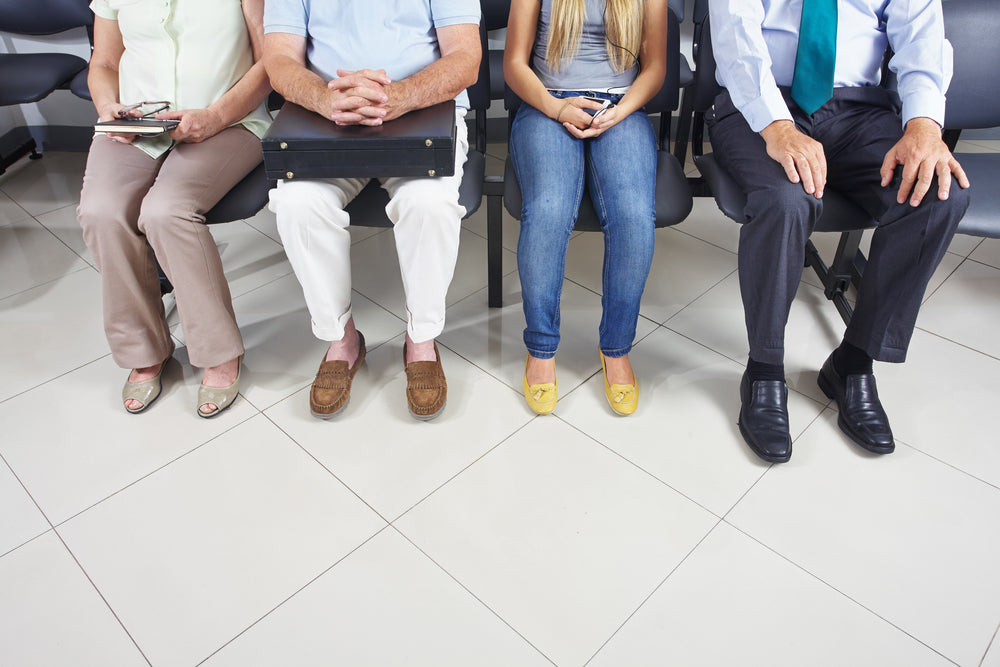It’s important to go into any medical procedure or appointment with as much information as possible. Especially when you know you may be getting a new diagnosis, this process can be overwhelming, but there are several ways you can mitigate your stress and anxiety. Number one? Know what you are signing up for.
A sleep apnea test can vary in time, investment, and length depending on what kind of test you and your doctor decide to do. The first option would be an in-lab sleep study--sometimes called a polysomnography. This is where you check into a hospital or medical center sleep lab for a night of monitored sleep. The other option is a Home Sleep Test(HST) where you can under a night of monitored sleep all form the comfort of home.
Making the choice between these two tests is important, but the deciding factor may come down to how long it will take to get your results.
How Long Will You Wait?
Polysomnography: 2-3 Months
The results process varies depending on which of the testing methods you use: Home Sleep Testing or a Polysomnography. If you opt for polysomnography, results can take months to get back because of the sheer amount of data they need to collect. Because they are testing for so many potentially severe conditions, analysis takes time and you may wait longer than necessary for a simple sleep apnea diagnosis.
Home Sleep Testing: 10-14 Days
If you opt for the home sleep testing option, you will likely get results back significantly sooner--often in 10-14 business days. Your HST provider will call you with the results of your sleep test as well as your treatment options and recommendations. Your results will always be interpreted by board-certified sleep physicians who will also provide pressure settings if you opt for CPAP or AutoPAP treatment.
Regardless of which testing option you and your doctor choose, it is extremely important to start treatment as soon as possible after a sleep apnea diagnosis. Sleep apnea can lead to very serious and frightening conditions if left untreated, so getting your diagnosis as soon as possible is imperative.
Polysomnography
If you choose to undergo a polysomnography, you may have a larger time commitment--not to mention you may be a bit more uncomfortable because of the nodes, wires, and unfamiliar environment that are required for this test. These kinds of in depth sleep tests are typically not necessary if you are only testing for sleep apnea. However, if you are worried about other, more severe conditions, like insomnia, narcolepsy, or restless leg syndrome, this may be the better option.
If you go this route, it will take at least one night of 8-9 hours of prep and testing. However, because of the hundreds of pieces of data gathered, they may ask you to come back for 1 or even 2-3 more nights of additional testing. It is imperative to get at least 3 hours of uninterrupted sleep during this process, so if you can’t fall asleep, you may have to come back, increasing your time investment in the testing process.
Sleep apnea is a different animal altogether, not only because of how simple it can be to diagnose, but also because it’s such a common sleep disorder. About 326 million people in the United States alone suffer from some level of sleep apnea, so, if you receive a diagnosis, you are absolutely not alone.
Home Sleep Testing
Home sleep tests (HSTs) are an alternative to a full polysomnography that can be a quicker, more cost effective option for many people who may already suspect they are suffering from untreated sleep apnea. The home sleep testing process is typically facilitated by an HST provider that you can contact on your own or receive a referral from your doctor.
You will receive an HST kit that includes a few different components: a portable sleep data monitor, chest strap, heart rate sensor, and a nasal cannula. You will receive all of these components as well as detailed instructions and, oftentimes, links to videos that will ensure you wear and operate the device appropriately so you can get great data on the first try.
An HST happens in the comfort of your own home, in your own bed. You may have to make arrangements if you are the parents of a small child or a caregiver. You should make sure that you try to follow your normal bedtime routines and sleeping conditions, so the data gathered is representative of your typical night’s sleep.
After you’ve correctly applied and used the home sleep testing unit, you simple mail it back to your provider for testing and analysis.
Sleep apnea is a very manageable and treatable condition, so, while you may have some reservations or anxieties, don’t worry too much if you do receive a diagnosis. Quality, restorative sleep is a critical part of being a healthy human being. Getting your results quicker can allow you to start the treatment you need much sooner. So don’t wait too long, and start figuring out how you can get back to sleeping well and living better.

